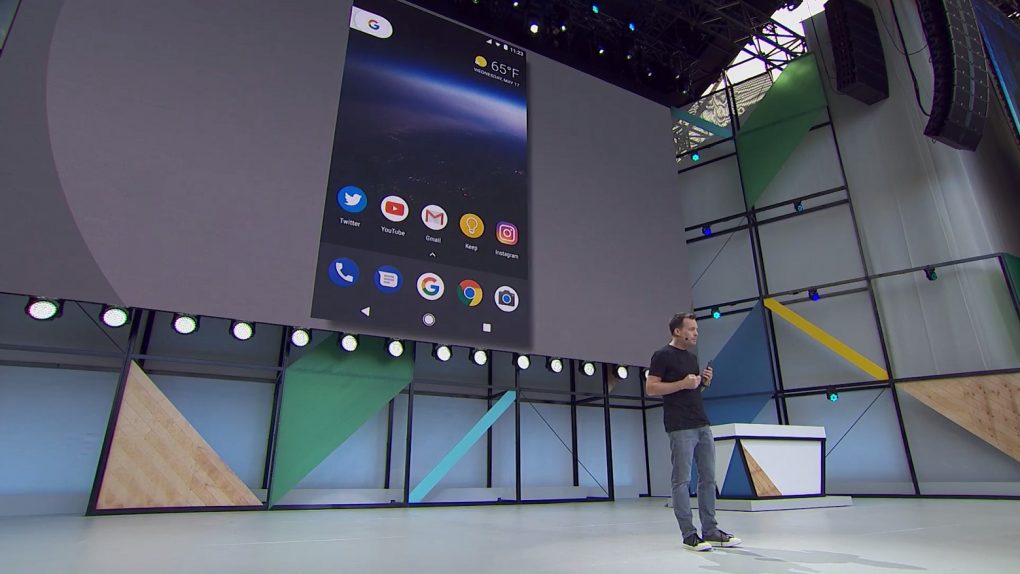Google I/O 2017 has been absolutely packed with announcements, but the company isn’t done yet. More than an hour into the event, Google has revealed some of the exciting new features coming in Android 8.0 (aka Android O). And don’t forget — you can sign up for the Android O beta right now.
The Android O segment of Google I/O was broken up into two sections: Fluid Experiences and Vitals.
Fluid Experiences encapsulate the new features and functionality coming to Android with the upcoming update. The first of those is Picture-in-Picture, which will allow users to hit the home button and return to the home screen while minimizing the active app into a small window. This feature will be supported by YouTube, Netflix, Google Maps and “a lot more” apps when it arrives alongside Android O.
Notification Dots are another notable addition to Android. In Android O, small dots will appear on launcher icons on the home screen when you have a notification from the app. You can long-press the app icon to see the notification without actually having to open the app. Google says that the color of the Notification Dot will actually respond to the color of the app icon as well.
Other Fluid Experiences include the ability to use Autofill in apps aside from Chrome and smart text selection for copy and paste. From now on, when you select a string of text, Google’s neural network will attempt to figure out exactly what you want to copy, be it a name or an address.
Finally, Google says that TensorFlow Lite (a more compact version of its open source machine learning software library) will be available on Android phones later this year.
#AndroidO brings a more fluid experience to your device. Here’s a first look at a few new features coming later this year. #io17 pic.twitter.com/TwKU0ftZFE
— Android (@Android) May 17, 2017
Moving on to Vitals, Google is introducing a new program called Google Play Protect to keep Android users safe from dangerous apps. Google says that it scans 50 billion apps a day, but it wants to make these security measures more visible to end users. Now everyone with an Android device can see how recently their apps have been scanned, or even initiate a new scan, with Google Play Protect.
Google also claims that boot time on Pixel devices will be twice as fast with Android O. All apps will be faster and smoother on Android O by default as well, thanks to changes in the runtime. Additionally, Google is adding “wise limits” to the location and execution of background apps to protect battery life and free up memory, all of which should make Android O run faster.
Last, but certainly not least for the crowd full of developers, Google introduced Play Console Dashboard, which analyzes every app and points out the top six issues causing performance issues like battery drain, crashes and slow UI. Developers will be able to see how many users are affected and will be provided with some potential fixes to make the app run better on Android devices.
The first beta release of Android O is available today at Android.com/beta.








